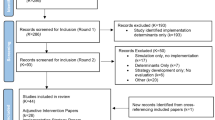Abstract
In order to benefit from antiretroviral therapy, pregnant women infected with HIV must be tested and diagnosed. Not infrequently, however, women present in labor without prior prenatal care and are thus unable to benefit fully from HIV testing and, if infected, antiretroviral therapy. In this study we evaluated the need for rapid perinatal HIV testing for untested mothers presenting in labor in a public maternal–child hospital that provides care for metropolitan Porto Alegre, Brazil, and potentially modifiable risk factors for noncompliance with national recommendations. We surveyed a consecutive sample of women who gave birth at Hospital Materno–Infantil Presidente Vargas (Presidente Vargas Mother-and-child Hospital) in August–October 2001and administered a structured questionnaire to consenting participants. The questionnaire consisted of demographic data, information on health-seeking behavior, knowledge of HIV infection, and testing during pregnancy. We confirmed information on HIV testing, syphilis, and hepatitis B by examination of the patient's prenatal records. We also obtained data regarding laboratory testing and treatment during labor and delivery (e.g., HIV testing, antiretroviral treatment, and suppression of lactation) from hospital inpatient charts. Of 214 eligible participants, 209 (98%) agreed to participate in the study. Overall 173 (83%) of the 209 participants had had a previous HIV test and 36 (17%) had not. Women with fewer pregnancies were more likely to have been tested (p = .017), as were women with lower family incomes (p = .007). No women had received rapid tests in the delivery room. Of the 209 participants, 201 (96%) had had at least one prenatal visit and 169 (81%) had had three or more visits; 12 (6%) of these reported that they had not been offered an HIV test, 5 (2%) did not know if testing had been offered or not, and 191 (95%) reported that they had been offered a test. We were able to obtain prenatal records for 190 (95%) of the 201participants who had received prenatal care. HIV testing was not mentioned in 9% of charts. Results of syphilis tests were recorded on prenatal records or hospital charts for 167 (80%)participants, and results of hepatitis B surface antigen were found for 93 (45%). Women who to 30pchad had three or more prenatal visits were significantly more likely to have been tested for to 30pcHIV (OR 46.96, 95% CI, 15.92–144.85, .0001), syphilis (OR 31.64, 95% CI, 11.81–87.42, p < .0001) or HBsAg (OR, 4.88, 95% CI, 1.91–12.99, p < .0001) than women who had had two prenatal visits or fewer. Our study showed shown that in 12% of the pregnancies included in our sample national recommendations for prenatal or perinatal testing were not followed, and in an additional 5%, HIV testing, though offered, was not obtained. These women could potentially have benefited from rapid HIV testing. As knowledge of HIV and risk factors for transmission were almost universal in our sample, we believe that the passive health-seeking behavior we observed may offer an opportunity for targeting new efforts to promote the importance of prenatal care and prenatal diagnosis of HIV.
Similar content being viewed by others
REFERENCES
Anderson, J. R. (2001). Perinatal transmission of HIV: A history of success that is not finished. Hopkins HIV Report, 13, 2–6.
Brazilian Ministry of Health. (2001). DATASUS. Diretório de Bancos de Dados [Health Database Directory]. Brasilia: Author.
Brocklehurst, P. (2001). Interventions aimed at decreasing the risk of mother-to-child transmission of HIV infection. In: The Cochrane library, Issue 4. Oxford: Update Software.
Centers for Disease Control and Prevention. (1999). Prenatal discussion of HIV testing and maternal HIV testing-14 states, 1996-1997. MMWR, 48, 401–404.
Centers for Disease Control and Prevention. (2001). Successful implementation of perinatal HIV prevention guidelines. MMWR, 50(RR-06), 15–28.
Lindegren, M. L., Byers, R. H., Jr., Thomas, P., Davis, S. F., Caldwell, F., Rogers, M., Gwinn, M., Ward, J. W., and Flemming, P. L. (1999). Trends in perinatal transmission of HIV/AIDS in the United States. JAMA, 282, 531–538.
Ministério de Saude (1997). Aids, ano X. Boletim Epidemiológico [Epidemiological Bulletin], 1997(45).
Ministério de Saude (2001a). Aids, ano XIV. Boletim Epidemiológico [Epidemiological Bulletin], 2001(13).
Ministério de Saude (2001b). Recomendações para profilaxia da transmissão maternoinfantil do HIV e terapia antiretroviral em gestantes. Comissão Nacional de Doenças Sexualmente Transmitidas e AIDS [National STD/AIDS Program, Brazilian Ministry of Health]. Brasilia: Author.
UNAIDS. (2001). United Nations Joint Program on HIV/AIDS. Available at http://www.unaids.org (accessed October 31, 2001).
Author information
Authors and Affiliations
Corresponding author
Rights and permissions
About this article
Cite this article
Ramos, M.C., Gregol, L.R.G., Germany, C. et al. Prevention of Mother-to-Child Transmission of HIV: Compliance with the Recommendations of the Brazilian National STD/AIDS Control Program for Prenatal and Perinatal HIV Testing in Porto Alegre, Brazil. AIDS Behav 6, 277–282 (2002). https://doi.org/10.1023/A:1019800110200
Issue Date:
DOI: https://doi.org/10.1023/A:1019800110200




